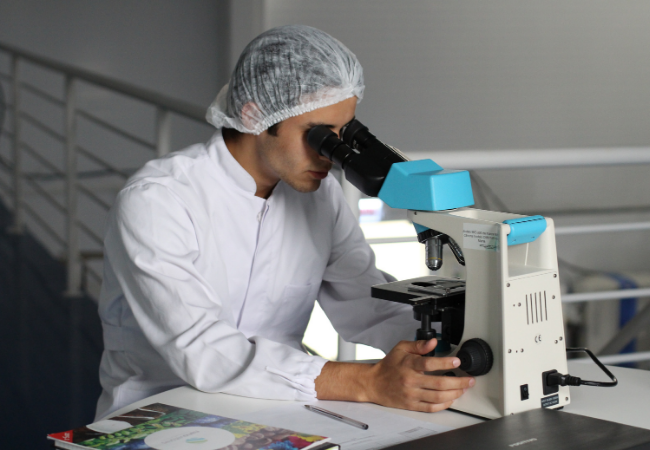One of the challenges that patients with Lyme face and the medical community is to diagnose the illness correctly.
One of the challenges that patients with Lyme face and the medical community is to diagnose the illness correctly.
Once a physician concludes that we have this pathology, the false negatives of the conventional analyses are very high. The biggest part of the patients takes time in finding a treatment while their health and life quality worsens.
If we know this, why does it take so long to have a result about the illness? The first consideration we can do is that this is an unknown disease not taken into account when elaborating diagnosis. We can affirm that they don’t search for it.” The disease can also be presented in three phases. The last one, Chronic Lyme, is the most difficult to heal.
In this sense, we refer more to a diagnosis. The variety of symptoms and their relation to other illnesses requires conscience by part of the specialist to be able to think about the possibility of this infection. Also, latency is one of the infection characteristics. Many symptoms do not develop until weeks or months after having contracted the disease.
Apart from being unknown, there is certain controversy about the real existence of the chronic, which prevents finding the adequate and at a time diagnosis.
To diagnose Lyme it is important to recognize the symptoms and heal the disease with correct analytics.
EARLY LYME DIAGNOSIS
A patient can attend a specialist with flu manifestations. If these symptoms match with a red rash in the skin or with a recent tick, the diagnosis is clear. In this case, the antibiotic treatment is enough to stop the infection.
It is always recommended as a preventive measure to check your skin after a walk in the countryside because ticks are so little that we don’t even notice they have bitten us On the contrary, we have the opportunity to have a result at a time.
It is important to sensibilize about the preventive measures. It is the best way to fight against Lyme.
EARLY DISSEMINATION LYME PHASE
When it hasn’t been diagnosed at the time, Lyme reappears in weeks or months after the bite. Borrelia bacteria expand by the organism provoking a series of symptoms not related to a tick bite. The diagnosis opportunity is lost. At this moment, it is more important to attend to a professional that knows a lot about the illness and can match symptoms.
If we end up finding the professional, the diagnosis tests succession begins.
The ELISA test is one of the most common tests. With a blood analysis, you detect cytokines, proteins produced by the immune system itself that reveal the presence of different diseases. This test is not sufficient because it does not detect whether antibodies that can defend against future infections – T-lymphocytes – have formed.
If the disease has evolved, the ELISA test emay end in a false negative in the latest Lyme phases because the infection is not seen. Although the symptoms have been getting worse apart from the inflammation as an immune response.
Why shouldn’t Lyme be discarded with a false negative in the Elisa test? Some studies reveal that only 53% of the Lyme patients’ sample could be positive by Elisa. The Western Blot test detected antibodies against borrelia in 32 negative patients by Elisa. The low presence of antibodies may make Elisa not able to detect them. It can be a consequence of the severe immunodeficiency that Lyme provokes.
Some centers like the BCA clinic in Germany or Biosalud Day Hospital in Spain have developed tests that analyse more exhaustively the presence of lymphocytes and indicate to us more clearly the patient state. As they explain from the BCA, “laboratories should analyse the “VlsE” (Variable Sequence Major Surface Antigen) in the Elisa and Immunoblot tests”. This antigen describes the “chameleonic” ability of the Borrelia burgdorferi to change constantly its protein of VlsE surface in real-time to evade its identification by the immune system. The borrelia infection is also accompanied by other co-infections with clear symptomatology. They are more difficult to diagnose. What is positive about these coinfections is that they can approach us to the diagnosis.
THE TESTS RELIABILITY TO DIAGNOSE LYME
The reliability of laboratory tests is measured in terms of exactitude and repeatability. Exactitude indicates the test’s capacity to detect the illness when it is present when it doesn’t exist. The repeatability measures the capacity test to give the same result in the same person. Although some tests can end in false positive or negative falses, it is not considered to be acceptable the big deviation of the test serology results when we refer to Lyme.
Both the reliability and repeatability of Elisa and Westerblot are not adequate for Lyme.
When they realise the tests it is also crucial. The antibodies response can be not detected if the test is done very soon or late. There have been numerous cases when the patient does not develop an autoimmune answer to this illness. It is vital to interpret the analysis results with the patient’s medical history.







